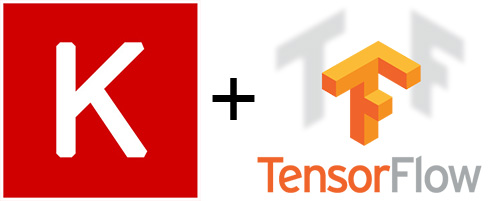
 @leriomaggio
@leriomaggio
|
 +ValerioMaggio
+ValerioMaggio
|
 valeriomaggio
valeriomaggio
|
 vmaggio_at_fbk_dot_eu
vmaggio_at_fbk_dot_eu
|
git clone -b pydatait
https://github.com/leriomaggio/deep-learning-keras-tensorflow.git-
Warmup
-
Part I: Introduction
-
Intro to ANN
- naive pure-Python implementation
- fast forward, sgd, backprop
-
Intro to Tensorflow
- Model + SGD with Tensorflow
-
Introduction to Keras
- Overview and main features
- Tensorflow backend
- Theano backend
- Keras Backend
- Overview of the main layers
- Multi-Layer Perceptron and Fully Connected
- Examples with
keras.models.SequentialandDense - HandsOn: FC with keras
- Examples with
- Overview and main features
-
Extra Material:
- Intro to Theano
- Alternative ANN implementation for MNIST
-
-
Break
-
Part II: Supervised Learning and Convolutional Neural Nets
-
Intro: Focus on Image Classification
-
Intro to ConvNets
- meaning of convolutional filters
- examples from ImageNet
- Meaning of dimensions of Conv filters (through an exmple of ConvNet)
- Visualising ConvNets
- HandsOn: ConvNet with keras
- meaning of convolutional filters
-
Advanced CNN
- Dropout
- MaxPooling
- Batch Normalisation
-
Famous Models in Keras (ref:
keras.applications) - VGG16 - VGG19 - ResNet50 - Inception v3- Transfer Learning
- HandsOn: Fine tuning a network on new dataset
-
-
Part III: Unsupervised Learning
- AutoEncoders (
5 mins) - word2vec & doc2vec (gensim) &
keras.datasetsEmbedding- word2vec and CNN
- Exercises
- AutoEncoders (
-
Part IV: Advanced Materials
- RNN and LSTM (
10 mins)- RNN, LSTM, GRU
- Example of RNN and LSTM with Text
- HandsOn: IMDB
- Multi-Input/Multi-Output Network Topologies
- RNN and LSTM (
-
Wrap up and Conclusions
This tutorial requires the following packages:
-
Python version 3.5
- Python 3.4 should be fine as well
- likely Python 2.7 would be also fine, but who knows? :P
-
numpyversion 1.10 or later: http://www.numpy.org/ -
scipyversion 0.16 or later: http://www.scipy.org/ -
matplotlibversion 1.4 or later: http://matplotlib.org/ -
pandasversion 0.16 or later: http://pandas.pydata.org -
scikit-learnversion 0.15 or later: http://scikit-learn.org -
kerasversion 2.0 or later: http://keras.io -
tensorflowversion 1.0 or later: https://www.tensorflow.org -
ipython/jupyterversion 4.0 or later, with notebook support
(Optional but recommended):
pyyamlhdf5andh5py(required if you use model saving/loading functions in keras)- NVIDIA cuDNN if you have NVIDIA GPUs on your machines. https://developer.nvidia.com/rdp/cudnn-download
The easiest way to get (most) these is to use an all-in-one installer such as Anaconda from Continuum. These are available for multiple architectures.
I'm currently running this tutorial with Python 3 on Anaconda
!python --versionPython 3.5.2
- Create the
keras.json(if it does not exist):
touch $HOME/.keras/keras.json- Copy the following content into the file:
{
"epsilon": 1e-07,
"backend": "tensorflow",
"floatx": "float32",
"image_data_format": "channels_last"
}
!cat ~/.keras/keras.json{
"epsilon": 1e-07,
"backend": "tensorflow",
"floatx": "float32",
"image_data_format": "channels_last"
}
import numpy as np
import scipy as sp
import pandas as pd
import matplotlib.pyplot as plt
import sklearnimport kerasUsing TensorFlow backend.
import numpy
print('numpy:', numpy.__version__)
import scipy
print('scipy:', scipy.__version__)
import matplotlib
print('matplotlib:', matplotlib.__version__)
import IPython
print('iPython:', IPython.__version__)
import sklearn
print('scikit-learn:', sklearn.__version__)numpy: 1.11.1
scipy: 0.18.0
matplotlib: 1.5.2
iPython: 5.1.0
scikit-learn: 0.18
import keras
print('keras: ', keras.__version__)
# optional
import theano
print('Theano: ', theano.__version__)
import tensorflow as tf
print('Tensorflow: ', tf.__version__)keras: 2.0.2
Theano: 0.9.0
Tensorflow: 1.0.1